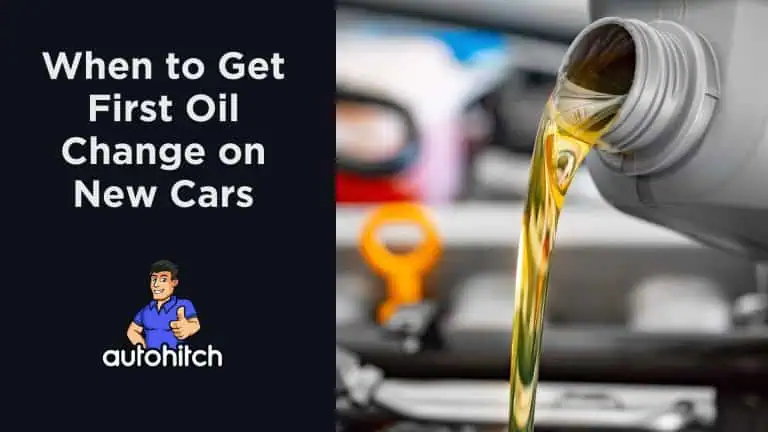After you have driven off the lot, one of the questions you likely forgot to ask the dealer is when to get the first oil change on your new car.
If you ask around or read the popular forumns, your likely to get a variety of answers, so what’s the right answer? The fact is: It depends! I created the table below to simplify when you should get your first oil change n a new car:
| Car Type | Recommended First Change Interval |
|---|---|
| Normal driving | Follow the manufactuerer’s recommendation in your owners manual |
| High-performance engines | 1,000 – 1,500 miles |
| Mostly short trips | Follow the manufacturer’s recommendation in your owners manual |
Related Articles:
Table of Contents
For Normal Driving
With modern engine technology and high-quality synthetic oils, most automakers now recommend first oil changes at around 7,500-10,000 miles.
However, this wasn’t always the case, and many people still follow outdated advice.
Before technology improved, the general advice was to change the oil on a new engine at 1,000 miles or so. The idea behind this is that it helps flush out any metal shavings or assembly fluids from the manufacturing process.
However, modern precision machining and cleaner factory assembly have generally reduced or eliminated the need to follow that old guidance.
For most new cars, the owner’s manual intervals are perfectly fine, even for the first change.
High Performance or Sports Cars
One exception is if you purchase a high-performance sports car or muscle car. These engines have tighter tolerances and are more prone to break-in issues.
For these vehicles, I recommend your first oil change at 1,000-1,500 miles to make sure you get proper lubrication as you break in the engine. This will definitely pay dividends in extended engine life.
Recomendation For City Driving or Short Trips
The type of driving is another factor to consider. If the majority of your miles will come from short trips and cold starts, an earlier first change makes sense. This combats moisture buildup and clears out condensed fuel residues faster. For primarily highway miles, you can safely stick to the automaker’s recommendation.
Why You Must Stick To the Manufacturer’s Recomendation
When considering first change intervals beyond 1,000 miles, rely on the manufacturer’s specifications over any quick lube shop or mechanic trying to sell you an unnecessary flush.
Modern engines using quality synthetic oils and filters engineered for extended service life do not require unusually frequent changes. By following the recommended intervals, you save money on unnecessary services while still properly protecting your vehicle.
One other advantage of sticking to the automaker’s specifications is that your new car warranty will remain intact.
Any required maintenance outlined in the owner’s manual must be completed as scheduled. Documentation of services from a licensed shop, using matching quality parts, is typically required to maintain coverage.
Excess services not specified by the manufacturer would be considered unnecessary and could void your warranty.
My Summary
In summary, here are some final best practices on first oil change intervals for new cars:
- Follow the manufacturer recommendations for normal driving
- Change at 1,000 miles for high-performance vehicles
- Adjust interval sooner if mostly cold starts and short trips
- Use quality synthetic oils and parts matching automaker specs
- Save service records to document scheduled maintenance
Sources For This Article
- https://www.reddit.com/r/Toyota/comments/pfok28/when_to_get_the_first_oil_change_on_a_new_car/
- https://www.reddit.com/r/rav4club/comments/123up6f/first_oil_change_myth_or_not/?rdt=50068
- https://bobistheoilguy.com/forums/threads/first-oil-change.304236/
- https://mechanics.stackexchange.com/questions/72988/should-i-perform-my-first-oil-change-at-1000-miles-or-when-the-manual-says



